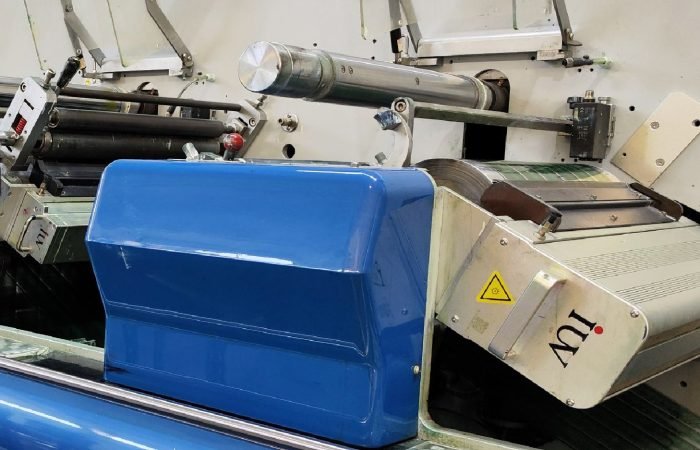Illuminate Your Label Printing: How LED Flexo Printing Slashes Energy Consumption and Elevates Output
In the dynamic world of label printing, efficiency and sustainability are no longer optional; they are the cornerstones of a successful business. Narrow web flexographic printing, a staple for producing high-quality labels, is undergoing a significant transformation thanks to advancements in UV curing technology. Specifically, the adoption of LED UV curing systems is revolutionizing how printers operate, offering a compelling combination of reduced energy consumption and dramatically boosted productivity. This isn’t just about staying current; it’s about future-proofing your operations and gaining a competitive edge.
Traditional UV curing methods often rely on mercury vapor lamps. These lamps consume a substantial amount of energy, generate considerable heat, and have a limited lifespan, necessitating frequent replacements and maintenance. This translates directly into higher operating costs and more downtime. The shift to LED UV technology addresses these issues head-on. LED systems are inherently more energy-efficient. They direct more of their energy into useful light, rather than wasted heat. This targeted approach means less electricity is drawn, leading to noticeable savings on your energy bills. For label printers, this can be a game-changer, especially with increasing energy prices.
Beyond the immediate energy savings, LED UV curing significantly enhances productivity. One of the key advantages is the instant on/off capability of LED lamps. Unlike mercury lamps that require a warm-up period and cool-down time, LED systems are ready to go the moment you need them. This eliminates waiting times between jobs or during setup, allowing for a more fluid and continuous printing process. Imagine switching between different jobs without the delay of lamp warm-up – this translates into more finished labels produced per shift.
The reduced heat output from LED UV curing is another critical factor contributing to increased productivity. High temperatures from traditional lamps can warp thinner substrates, leading to print defects and material waste. This often forces printers to slow down their presses to manage heat buildup. LED systems emit a much cooler spectrum of light. This allows for printing on a wider range of sensitive materials, including thinner films and delicate papers, without the risk of distortion. The ability to run presses at higher speeds without compromising substrate integrity or print quality directly translates to greater output.
Furthermore, the precise control offered by LED UV systems plays a vital role. LEDs can be precisely controlled in terms of intensity and wavelength. This precision allows for optimized curing of specific ink formulations, ensuring excellent adhesion, gloss, and durability. When inks cure properly and quickly, the risk of smudging or scuffing is minimized, reducing the need for costly reprints and rework. This consistent curing performance means fewer quality control issues and a higher percentage of saleable product coming off the press.
When comparing flexographic printing with offset or other methods for narrow web applications, the inherent speed and efficiency of flexo are amplified by LED UV curing. Flexo is already well-suited for high-volume, repetitive label production. Adding LED curing removes bottlenecks associated with older curing technologies, allowing flexo presses to operate at their maximum potential speed. This makes flexographic printing, powered by LED UV, an even more attractive and cost-effective solution for label manufacturers.
The lifespan of LED UV lamps is another significant benefit. While mercury lamps typically need replacement after a few thousand hours of use, LED systems can last tens of thousands of hours. This drastically reduces the frequency of lamp replacements, leading to lower maintenance costs and less unscheduled downtime. Fewer interruptions for maintenance mean more continuous production time, a direct boost to your overall productivity. Think about the cumulative cost and time saved over the life of the equipment.
From an environmental perspective, the advantages are also clear. Reduced energy consumption means a smaller carbon footprint. The absence of mercury in LED lamps also makes them a more environmentally friendly option, aligning with the growing demand for sustainable printing practices. Printers who embrace LED UV technology can highlight these green credentials to their clients, attracting business from companies that prioritize eco-conscious suppliers.
The integration of LED UV systems into existing narrow web flexo presses is often straightforward. While initial investment is a consideration, the long-term savings in energy, reduced maintenance, and increased throughput make it a financially sound decision. Many printers find that the return on investment is realized relatively quickly through these operational efficiencies.
In essence, LED UV curing is more than just an upgrade; it’s a fundamental shift in how flexographic label printing can be performed. It empowers printers to achieve higher speeds, print on a broader range of materials, reduce operational costs through lower energy consumption, and minimize waste. For label converters looking to enhance their capabilities, reduce their environmental impact, and ultimately increase their profitability, embracing LED flexo printing is a clear path forward. It’s about working smarter, not just harder, in the competitive landscape of today’s label market. The future of printing is bright, and LED UV is leading the way.












